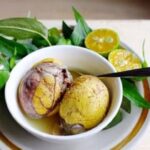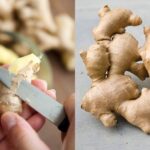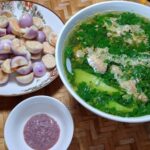Bún and miến are two popular dishes in Vietnamese cuisine, beloved by many. From bún riêu cua to miến gà, these dishes offer a unique and diverse range of flavors. But which is the healthier choice? Let’s delve deeper into these culinary delights and find a satisfactory answer.
Bún and Miến in Daily Life
Bún and miến are not just delicious meals but also embody the essence of traditional Vietnamese culinary art. However, when it comes to health, a common question arises: “Which is healthier, bún or miến?” To answer this query, let’s explore the characteristics of each.
Bún is made from rice or wheat flour, skillfully kneaded, rolled thin, and cut into fine strands. In Vietnam, there are various types of bún, such as fresh and dried bún, each with its unique preparation methods and flavors.
According to nutrition experts at the Vietnam Nutrition Association, fresh rice bún has significant nutritional value. A bowl of fresh bún (about 100 grams) can contain approximately 250-300 calories, mostly from carbohydrates. It also provides a small amount of protein and fiber. Vitamins such as B1 and B6, and minerals like iron and zinc, are also present in rice bún.
Miến, on the other hand, is made from natural starches like cassava, potato, or rice flour. There are two common types of miến: miến dong and miến gạo. Miến dong is a traditional product made from cassava, while miến gạo is a more modern variation made from rice.
Research from the Vietnam Food and Nutrition Center reveals that miến dong has a lower calorie count than bún, ranging from 80 to 100 calories per 100 grams. It is also richer in fiber. Additionally, miến has a lower glycemic index than bún, which is crucial for individuals with diabetes or those needing to monitor their blood sugar levels. Furthermore, miến is gluten-free, making it suitable for those with gluten allergies or intolerance.
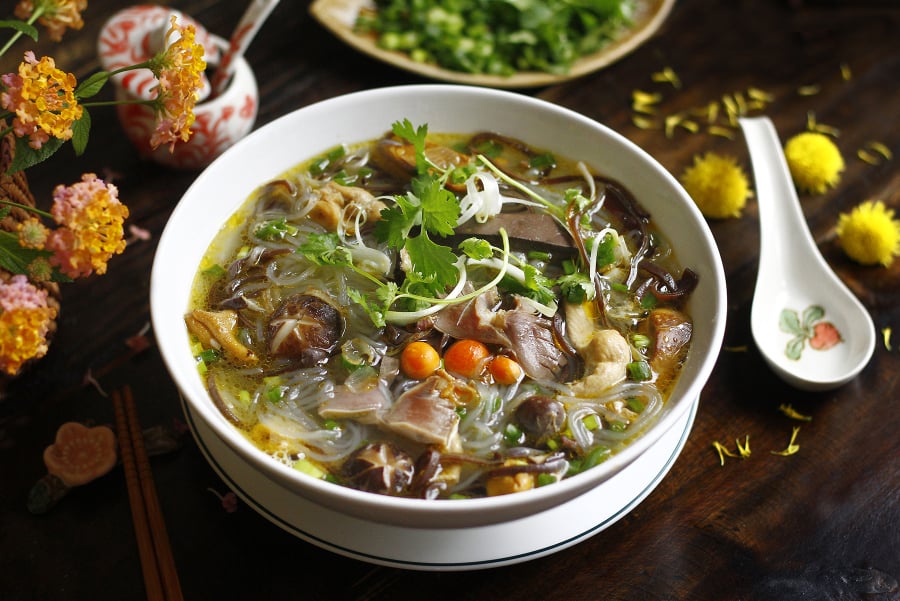
Comparing Nutritional Content
Calorie Content: Bún has a higher calorie count, providing quick energy, ideal for laborers or athletes requiring instant fuel.
Carbohydrates: Bún contains more starch but has a higher glycemic index, which can cause rapid spikes in blood sugar if consumed in excess.
Protein: Bún offers a higher protein content of around 5-7 grams per 100 grams, while miến provides only about 1-2 grams per 100 grams.
Fiber: Miến is richer in fiber, benefiting digestive health.
Vitamins and Minerals: Bún provides vitamins B1 and B6, along with minerals like iron and zinc. Miến, on the other hand, is higher in calcium and magnesium.
Pros and Cons of Bún and Miến
Bún:
- Pros: Easy to digest, inexpensive, and widely available.
- Cons: Higher glycemic index than miến and lower fiber content.
Miến:
- Pros: Lower in calories, lower glycemic index, gluten-free.
- Cons: Pricier, some varieties may contain additives.
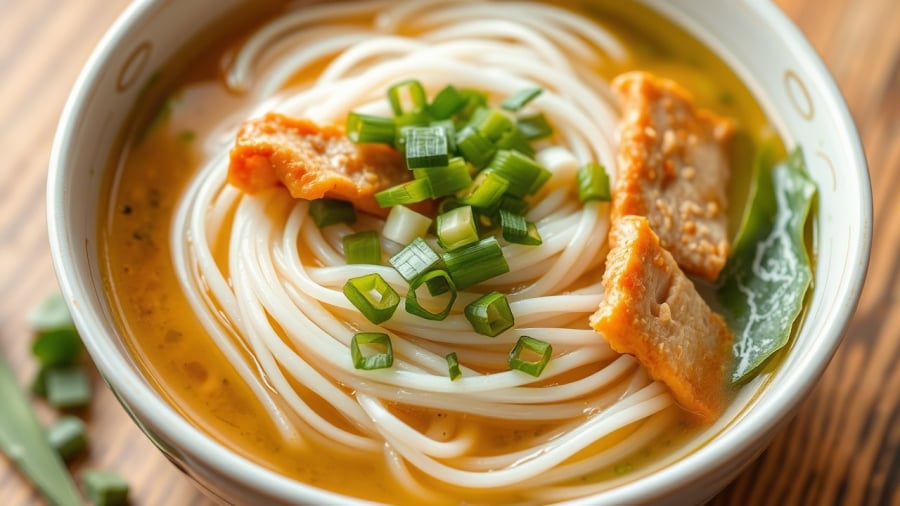
Suitability for Different Individuals
- Weight Loss: Opt for miến due to its lower calorie content and satiating effect.
- Diabetes: Miến is preferable due to its lower glycemic index.
- Gym-goers: Bún’s higher protein content complements other protein-rich foods.
- Digestive Issues: Bún is easier to digest.
Notes on Consuming Bún and Miến
For optimal health, consider the following when eating bún and miến:
- Purchase bún and miến from reputable sources to ensure food safety and hygiene.
- Avoid overeating; practice portion control.
- Combine bún and miến with green vegetables and protein sources for balanced nutrition.
- Choose sauces with reduced sugar and salt content.
There is no absolute answer to the question, “Which is healthier, bún or miến?” The key lies in choosing what suits your needs, physical condition, and health goals. Consult with nutrition experts to devise a scientific and effective diet plan.
Hopefully, this article has given you a broader perspective on bún and miến. Be a wise consumer and make informed choices for yourself and your family!
“6 Groups Who Should Steer Clear of Balut: A Delicious Delicacy With Potential Health Risks”
Eggs have long been a staple food for humans, offering a cheap and convenient source of protein. However, one particular type of egg has divided opinions and palates across the globe – the duck embryo egg, or ‘balut’. This delicacy is loved and loathed in equal measure, and while it is undeniably nutritious, it is not for the faint-hearted or those with certain health conditions.


























